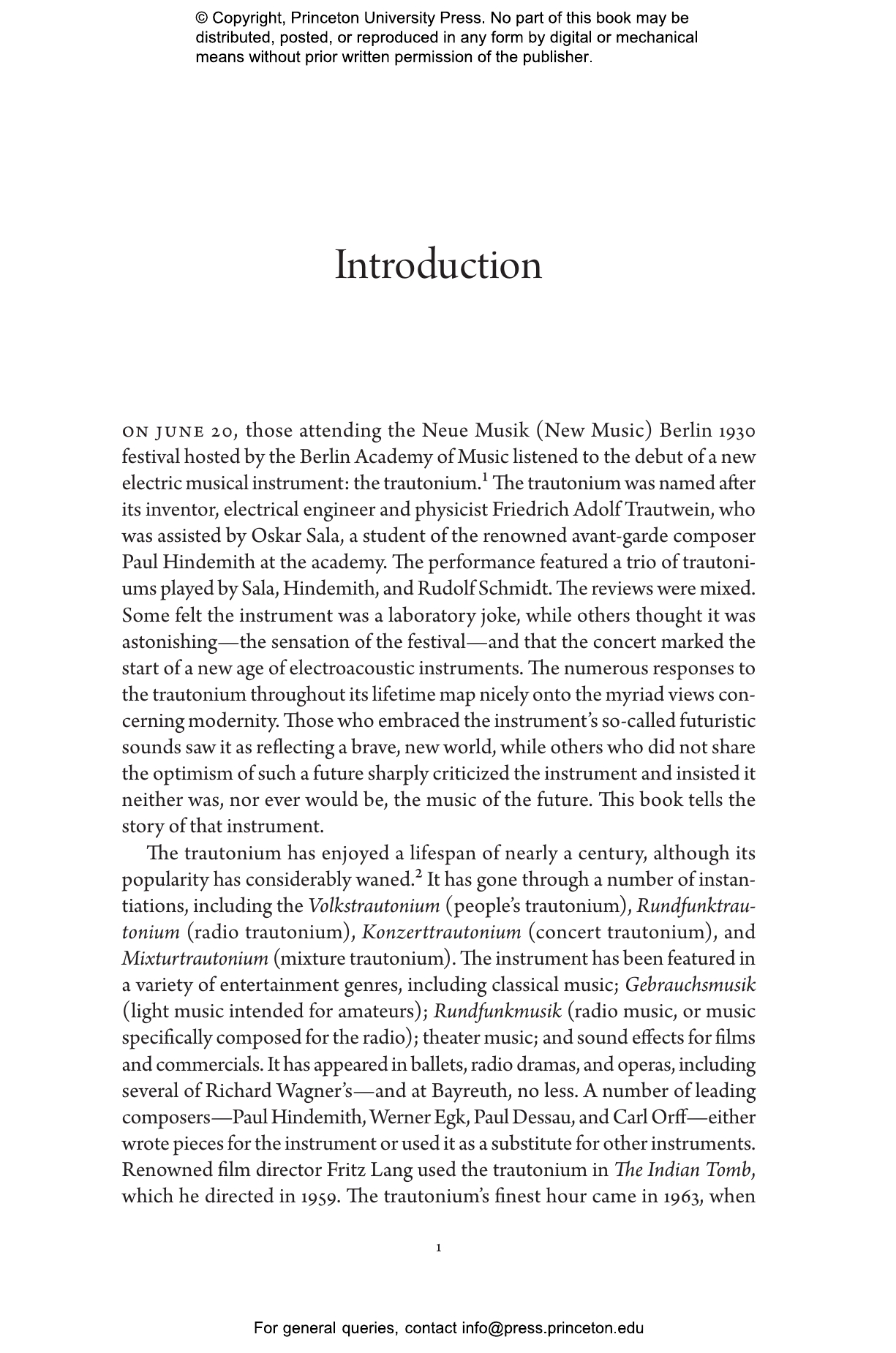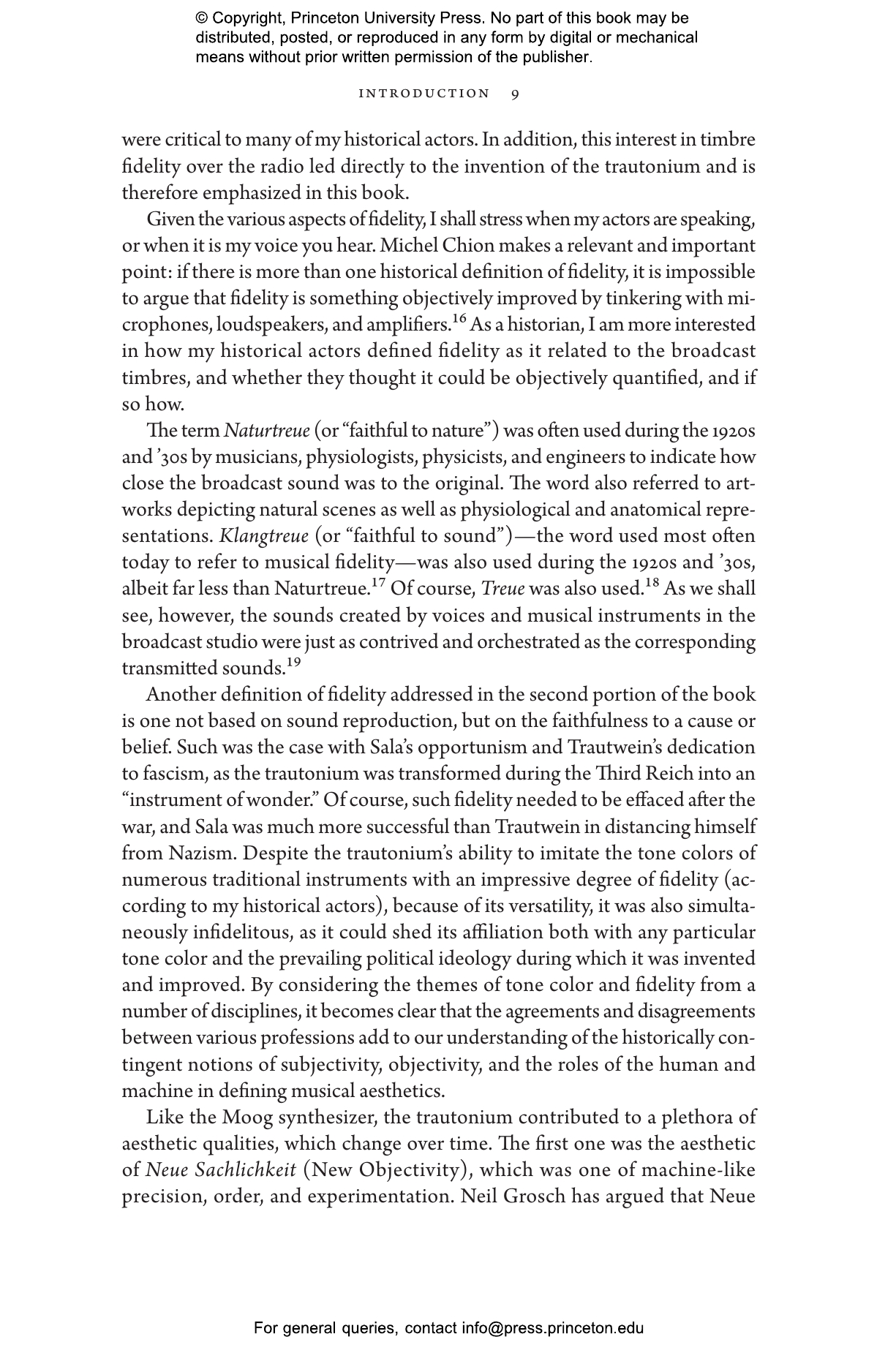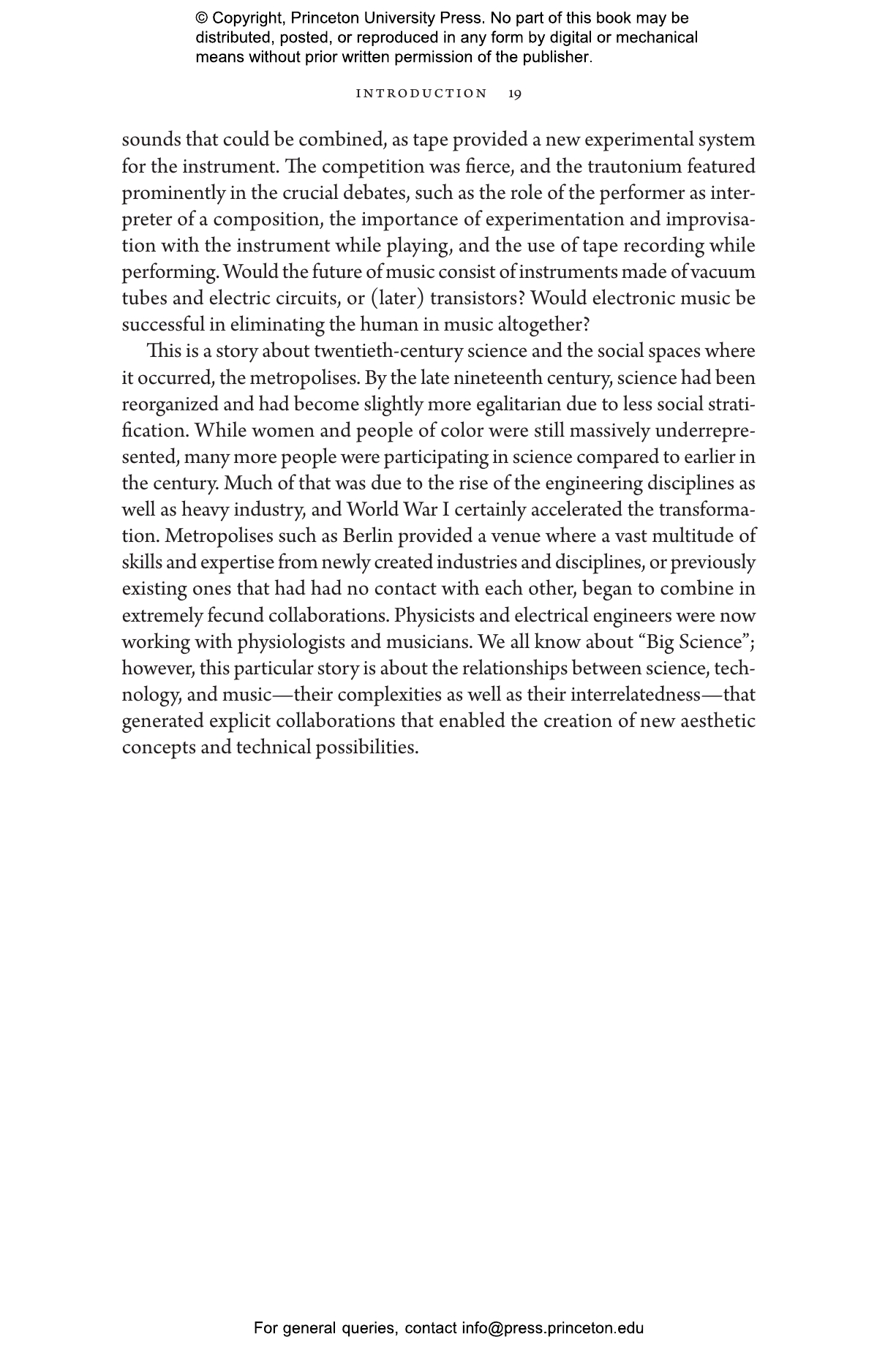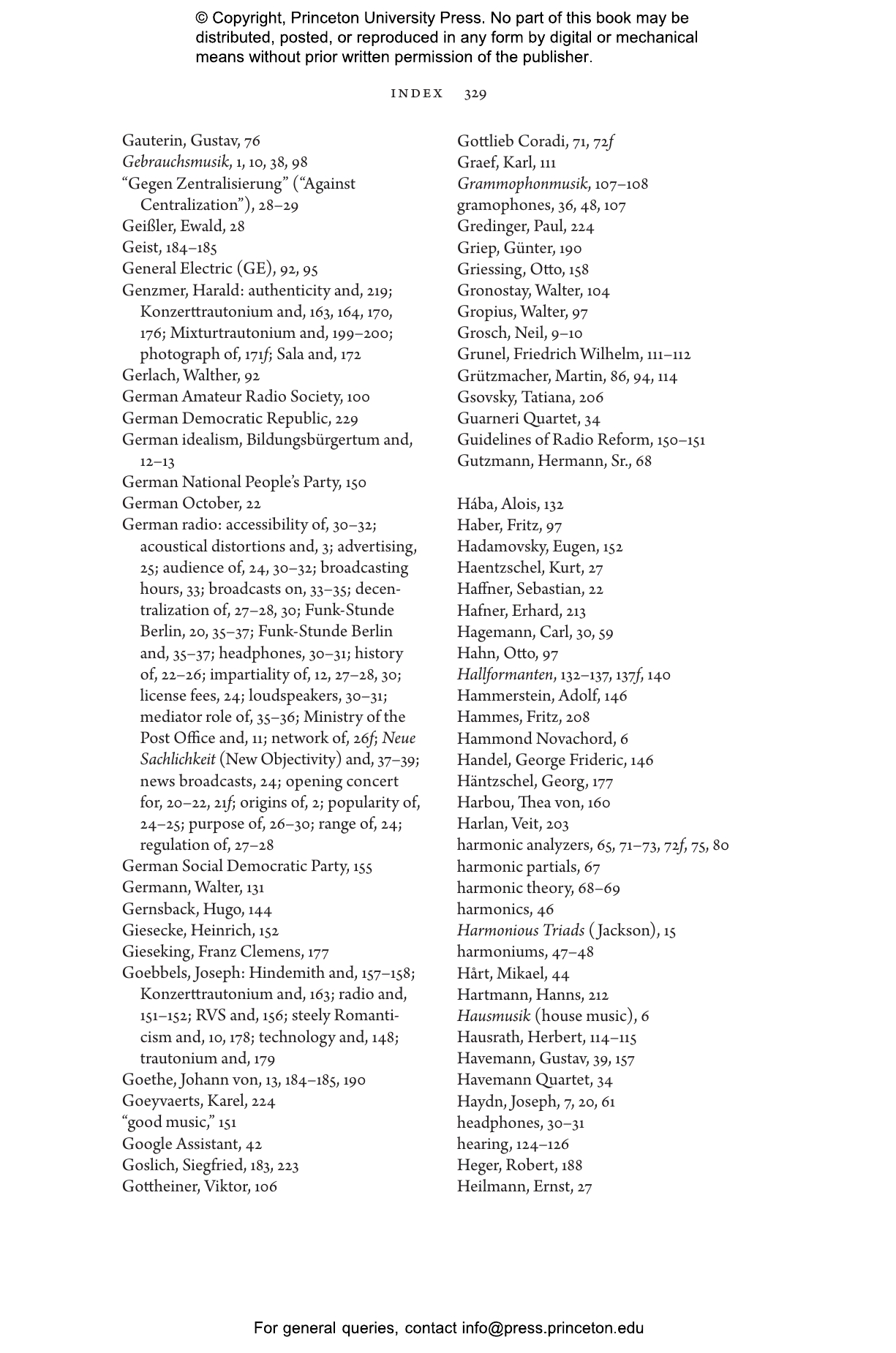When we turn on a radio or stream a playlist, we can usually recognize the instrument we hear, whether it鈥檚 a cello, a guitar, or an operatic voice. Such fidelity was not always true of radio. Broadcasting Fidelity shows how the problem of broadcast fidelity pushed German scientists beyond the traditional bounds of their disciplines and led to the creation of one of the most important electronic instruments of the twentieth century.
In the early days of radio, acoustical distortions made it hard for even the most discerning musical ears to differentiate instruments and voices. The physicists and engineers of interwar Germany, with the assistance of leading composers and musicians, tackled this daunting technical challenge. Research led to the invention in 1930 of the trautonium, an early electronic instrument capable of imitating the timbres of numerous acoustical instruments and generating novel sounds for many musical genres. Myles Jackson charts the broader political and artistic trajectories of this instrument, tracing how it was embraced by the Nazis and subsequently used to subvert Nazi aesthetics after the war and describing how Alfred Hitchcock commissioned a later version of the trautonium to provide the sounds of birds squawking and flapping their wings in his 1963 thriller The Birds.
A splendid work of scholarship by an acclaimed historian of science, Broadcasting Fidelity reveals how the interplay of science, technology, politics, and culture gave rise to new aesthetic concepts, innovative musical genres, and the modern discipline of electroacoustics.
Myles W. Jackson is the Albers-Sch枚nberg Professor in the History of Science at the Institute for Advanced Study in Princeton. He is the author of The Genealogy of a Gene: Patents, HIV/AIDS, and Race; Harmonious Triads: Physicists, Musicians, and Instrument Makers in Nineteenth-Century Germany; and Spectrum of Belief: Joseph von Fraunhofer and the Craft of Precision Optics.
“No one who has watched Alfred Hitchcock’s The Birds can forget the frightening sounds of the birds in the climax of the film. Myles Jackson, a historian of science, technology, and music, has now written a rich and fascinating history about the instrument that produced these sounds. The trautonium, as this mechanical instrument was called, epitomized the sound of modernity, and Jackson’s lively and learned book explains the multiple resonances it had in its time.”—Celia Applegate, Vanderbilt University
“Broadcasting Fidelity combines an acute understanding of the technical and cultural issues in German music, radio, and electroacoustics that accompanied the invention of one of the first electronic instruments, the trautonium. No other book in science, musical performance, and acoustics history so beautifully and ably illuminates the ways in which apparently disparate arenas overlapped to produce novel results in every one of them.”—Jed Z. Buchwald, Doris and Henry Dreyfuss Professor of History at the California Institute of Technology and coauthor of The Riddle of the Rosetta
“German electrical engineer Friedrich Trautwein invented his musical synthesizer, the trautonium, in 1930—and it rocketed to popularity across genres and media, from radio and concert halls to Hollywood films. This quintessentially modern musical instrument opens a window to the crisscrossed history of physics and engineering, Nazism and avant-garde music, aesthetics and musical history. A tour de force that only Myles Jackson, with his historical, technical, and musical chops, could have written.”—Peter Galison, Harvard University and coauthor of Objectivity
“Jackson stresses the importance of ideas about fidelity in the history of audio and argues that they cannot be separated from cultural ideas about speech, music, and the purpose of broadcasting. Copiously researched, Broadcasting Fidelity is destined to become the definitive history in English of German radio engineering.”—Jonathan Sterne, author of MP3: The Meaning of a Format
“This is an important study of the physics and engineering of mass-broadcasting music in interwar and later Germany. Jackson’s wonderful account is refracted through the lens of a novel musical instrument—the trautonium—and a new problem that arose during the early age of radio, the problem of fidelity.”—Adelheid Voskuhl, University of Pennsylvania
“Broadcasting Fidelity reconciles the fractal and the tectonic. Physicists, engineers, musicians, and politicians build the means for a studio to speak to a nation—radio—which enables a new electronic instrument—the trautonium—to remake those same disciplines. Jackson’s history doesn’t add a brick to the wall; it demolishes it to make way for a new account of modernity.”—Andrew Warwick, University of Oxford
Related video links:
Link 1
Link 2
Link 3
Link 4
Link 5
Link 6
Link 7
Link 8
Link 9
Link 10
Link 11
Link 12
Link 13
Link 14
Link 15
Link 16
Link 17
Link 18





































